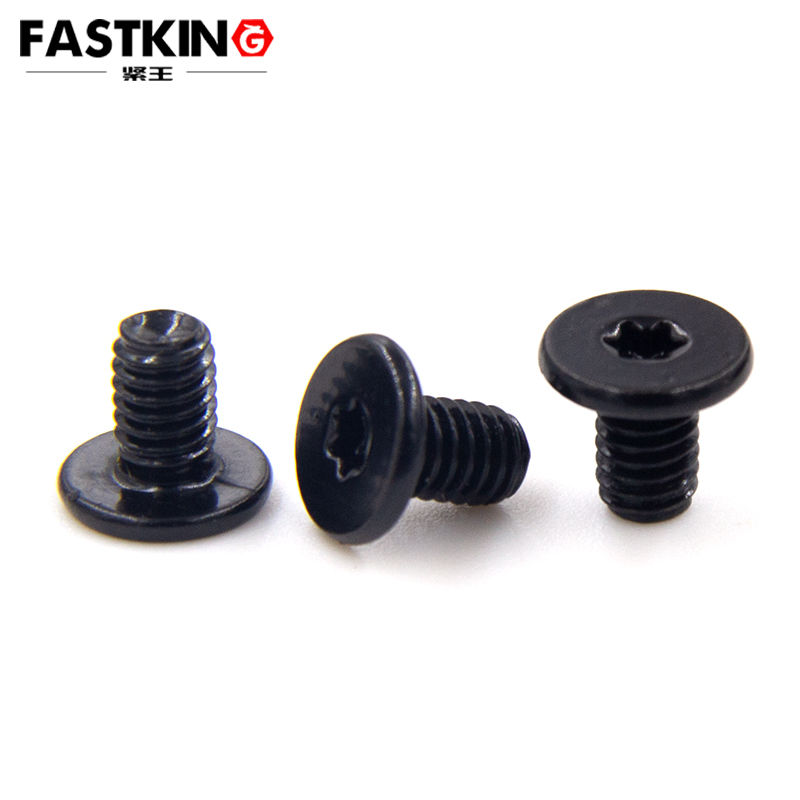- Torx screw,torx machine screw,torx self tapping screw
- sales@jlfastener.com
-
Call Now +86-0756-8586520
-
Send Email sales@jlfastener.com
-
Send Email Mon - Sat 8:00 - 6:30, Sunday - CLOSED
Why Is Oxidation Blackening Treatment Applied to Stainless Steel Fasteners?
Why Is Oxidation Blackening Treatment Applied to Stainless Steel Fasteners?
Core Process Value: Analysis of Oxidation Blackening Advantages
Oxidation blackening treatment brings multiple performance improvements to stainless steel fasteners. The most core advantage is enhanced corrosion resistance — the dense structure of the formed oxide film can effectively isolate moisture, oxygen, and corrosive media from contacting the substrate. In humid environments, it can extend the corrosion-resistant service life of fasteners by 3-5 times. This protective effect is particularly critical for equipment connectors exposed to outdoor or high-humidity environments.
Secondly, blackening treatment can reduce the surface friction coefficient. The porous structure of the oxide film can store lubricating oil, reducing wear between threads during fastener assembly and lowering resistance during tightening. At the same time, it avoids the seizing phenomenon caused by direct metal contact, making it especially suitable for materials like stainless steel that are prone to cold welding. Data from an automotive engine factory shows that the assembly qualification rate of bolts after blackening treatment has increased to over 99.5%.

In addition, the black oxide film has a uniform decorative effect, which can make the appearance of batch fasteners consistent and meet the aesthetic requirements of equipment. Compared with processes such as electroplating, blackening treatment does not change the dimensional accuracy of fasteners, making it highly advantageous for parts in precision connection positions.
Scenario Adaptation: Application Fields of Blackened Fasteners
In the automotive industry, bolts and nuts in the engine compartment widely adopt blackening treatment. These components need to withstand erosion from media such as engine oil and coolant — the blackened film can effectively resist chemical corrosion while reducing friction loss during assembly, ensuring the long-term stable operation of the engine. After blackening treatment, the salt spray resistance of fasteners in the chassis suspension system is significantly improved under complex road conditions.
Connectors for transmission components in the machinery manufacturing field are typical application scenarios for blackening treatment. High-strength bolts in gearboxes solve the lubrication problem through blackening treatment while enhancing corrosion resistance in the gear oil environment. After blackening treatment, the fixing bolts of machine tool guideways can maintain connection reliability in environments where cutting fluid splatters.
Metal bracket fasteners for electronic equipment also often use the blackening process. On one hand, the black appearance can reduce light reflection interference during equipment operation; on the other hand, the insulating property of the oxide film can reduce the risk of current leakage. It is widely used in equipment such as communication base stations and precision instruments. After blackening treatment, fasteners for outdoor power facilities can resist wind and rain erosion, extending the maintenance cycle.
Standardized Process: Usage Method of Oxidation Blackening
The oxidation blackening treatment of stainless steel fasteners must follow a strict process flow. The first step is the pre-treatment stage — oil stains, oxide scales, and rust on the workpiece surface must be completely removed. Ultrasonic cleaning combined with pickling is usually used to ensure surface cleanliness, which directly affects the adhesion of the oxide film.
The core treatment stage adopts either the high-temperature oxidation method or the room-temperature blackening method. The high-temperature method involves immersing fasteners in an alkaline oxidation solution at 130-150℃ for 30-60 minutes to generate a ferroferric oxide film through chemical reaction; the room-temperature method uses an acidic oxidation solution for treatment at room temperature, which is suitable for parts with extremely high requirements for dimensional accuracy. During the treatment process, the solution concentration and treatment time must be strictly controlled to ensure the film thickness is uniformly between 0.5-1.5 microns.
The final step is the post-treatment process, including cleaning, oil immersion, and drying. The blackened fasteners are rinsed with clean water to remove residual chemicals, then immersed in anti-rust oil to seal the pores of the oxide film, and finally dried at low temperature to complete the process. In some high-precision scenarios, hardness testing and salt spray testing are also required to ensure the quality of the oxide film meets standards.
With its characteristics of low cost and good effect, oxidation blackening treatment has become a preferred surface treatment solution for stainless steel fasteners. With the R&D and application of environmentally friendly blackening agents, this traditional process is developing towards a greener and more efficient direction, continuing to provide reliable technical support for industrial manufacturing.

